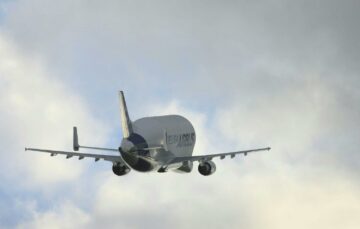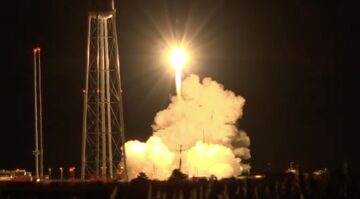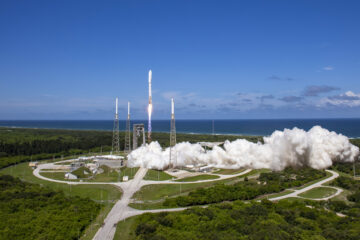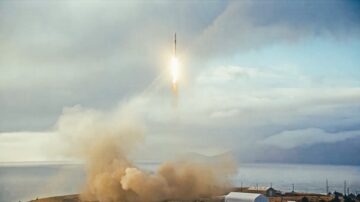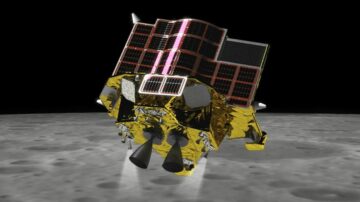WASHINGTON — Mynaric’s laser communications terminals passed key ground tests required to be deployed on Space Development Agency satellites, the company announced Sept. 28.
The company’s CONDOR Mk3 terminal was selected by Northrop Grumman, one of several manufacturers under contract to produce satellites for the Space Development Agency.
SDA, an agency under the U.S. Space Force, plans to deploy a mesh network of interconnected satellites. It includes a Transport Layer that will transmit data collected by a Tracking Layer of missile-detection sensor satellites. Each spacecraft is equipped with multiple laser communications terminals.
Optical terminals use lasers to connect satellites in orbit so they can transfer data in space.
Mynaric’s terminals will be integrated with Northrop Grumman’s 42 Transport Layer and 14 Tracking Layer Tranche 1 satellites to be produced over the next two years.
The tests recently completed demonstrated technical performance and interoperability, said Joachim Horwath, founder and chief technology officer of Mynaric.
All optical terminals installed on SDA satellites have to comply with technical specifications and standards issued by the agency. They also have to be interoperable with terminals made by other suppliers.
Mynaric confirmed that the CONDOR Mk3 that will be on Northrop Grumman’s Tranche 1 satellites demonstrated interoperability with a CACI terminal that will be on Lockheed Martin’s Tranche 1 satellites.
An initial round of tests conducted at Mynaric’s facilities in Munich, Germany, focused on pointing, acquisition, tracking and data transmission. The interoperability tests took place at the U.S. Naval Research Lab, the agency selected by SDA to oversee optical communications testing.
“This milestone demonstrates that Mynaric products meet the SDA’s standards and are fully interoperable with other terminals implementing the same standard,” said Mustafa Veziroglu, CEO of Mynaric.
Mynaric does not have an exclusive agreement with Northrop Grumman. The CONDOR Mk3 terminal was selected by Raytheon and other undisclosed SDA satellite manufacturers.
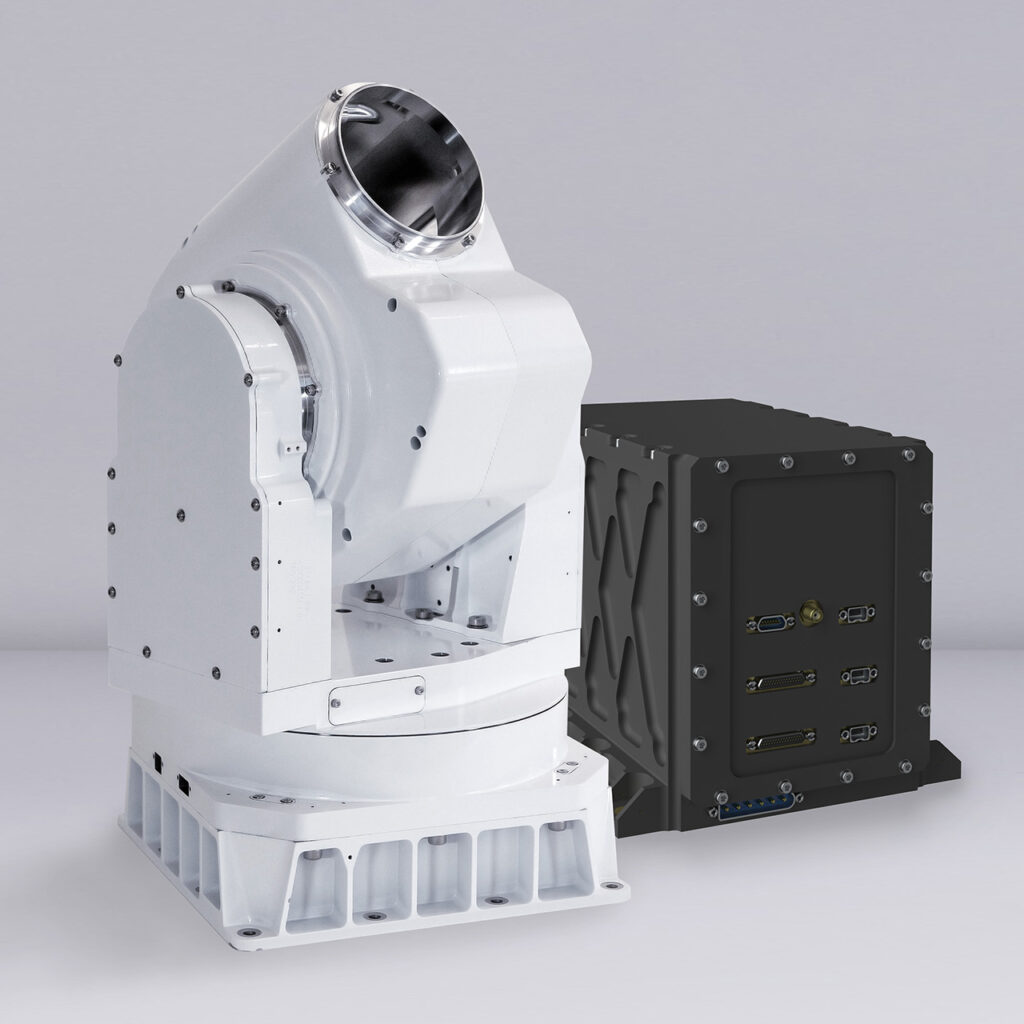
Veziroglu said the company has a production backlog of about 370 terminals that are under contract. The optical heads are made in Germany and the electronic components in Hawthorne, California.
Louis Christen, director of Northrop Grumman’s proliferated space operations, said the company supported Mynaric throughout the testing process.
“SDA’s mission really demands that these terminals connect seamlessly and communicate seamlessly at a very high rate across the constellation,” Christen said. “So we view this as a very important event that retires one of the major technical risks on the program.”
Christen said Northrop Grumman selected Mynaric for its production capabilities. “We’re on site at their factory continuously and we’ve been impressed with their facility and their overall readiness,” he said.
Each Northrop Grumman Transport Layer satellite has four optical terminals, and each Tracking Layer satellite has three.
- SEO Powered Content & PR Distribution. Get Amplified Today.
- PlatoData.Network Vertical Generative Ai. Empower Yourself. Access Here.
- PlatoAiStream. Web3 Intelligence. Knowledge Amplified. Access Here.
- PlatoESG. Carbon, CleanTech, Energy, Environment, Solar, Waste Management. Access Here.
- PlatoHealth. Biotech and Clinical Trials Intelligence. Access Here.
- Source: https://spacenews.com/mynaric-optical-terminals-selected-for-northorp-grumman-satellites-pass-key-tests/
- :has
- :is
- :not
- 1
- 14
- 28
- a
- About
- acquisition
- across
- agency
- Agreement
- also
- an
- and
- announced
- ARE
- AS
- At
- BE
- been
- by
- california
- CAN
- capabilities
- ceo
- chief
- chief technology officer
- Christen
- communicate
- Communications
- company
- Company’s
- Completed
- comply
- components
- conducted
- CONFIRMED
- Connect
- continuously
- contract
- credit
- data
- demands
- demonstrated
- demonstrates
- deploy
- deployed
- Development
- Director
- does
- each
- Electronic
- equipped
- Event
- Exclusive
- facilities
- Facility
- factory
- focused
- For
- founder
- four
- fully
- Germany
- Ground
- Have
- he
- heads
- High
- HTTPS
- implementing
- important
- impressed
- in
- includes
- initial
- installed
- integrated
- interconnected
- Interoperability
- interoperable
- Issued
- IT
- ITS
- jpg
- Key
- lab
- laser
- lasers
- layer
- made
- major
- Manufacturers
- max-width
- Meet
- mesh
- Mesh network
- milestone
- Mission
- multiple
- Munich
- network
- next
- of
- Officer
- on
- ONE
- Operations
- optical
- Orbit
- Other
- over
- overall
- oversee
- pass
- passed
- performance
- Place
- plans
- plato
- Plato Data Intelligence
- PlatoData
- process
- produce
- Produced
- Production
- Products
- Program
- Rate
- Readiness
- really
- recently
- required
- research
- risks
- round
- s
- Said
- same
- satellite
- satellites
- seamlessly
- selected
- sept
- several
- site
- So
- Space
- spacecraft
- specifications
- standard
- standards
- Supported
- Technical
- Technology
- Terminal
- Testing
- tests
- that
- The
- their
- These
- they
- this
- three
- throughout
- to
- took
- Tracking
- transfer
- transmit
- transport
- two
- u.s.
- under
- use
- very
- View
- was
- we
- will
- with
- years
- zephyrnet

